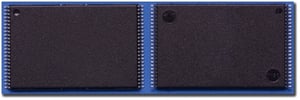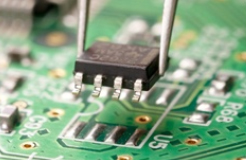June 2022 FAQ: PEM
Q: What is a PEM?
 A: Plastic encapsulated IC’s or Microcircuits are commonly referred to as PEMs. Plastic encapsulated Transistors and Diodes are typically referenced as PETs and PEDs respectively.
A: Plastic encapsulated IC’s or Microcircuits are commonly referred to as PEMs. Plastic encapsulated Transistors and Diodes are typically referenced as PETs and PEDs respectively.
Q: Why do companies use PEMs?
A: The main reasons are
- Primarily to lower costs and accelerate time to market because:
- Higher volume/more cost-effective production
- Shorter lead times – many products off-the-shelf
- Greater product variety
- Mechanically more rugged
- Lighter weight - available in smaller/thinner packages
Q: What are the potential concerns with PEMs in an Aerospace and Defense system?
A: The main potential concerns are:
- PEMs have predominately been designed for commercial and industrial applications – not Aerospace and Defense (A&D).
- Higher military temperature ranges are not generally available (except EP)
- Typical PEMs are COTs and screening by OCM are not always as stringent as A&D end applications require.
- Qualifications are typically at the inception of product release and is not lot-by-lot.
- Qualifications are typically not sequential as used by A&D.
- Reliability of plastic packages could vary dramatically from supplier to supplier.
- Copper bond wire PEMS are known to have Reliability concerns if not properly manufactured
Q: What are typical PEM failure modes?
A: Typical failure modes are
- CTE mismatch between molding compound and mase material as well as
- Pop corning of plastic package
- Delamination
- Die attach voids
- Cracked package & cracked die
- Wire breaks & wire lift
- Corrosion
- Contamination
- Moisture ingression / Current leakage
- Cracked passivation
 Q: What are some key considerations in a PEM qual plan?
Q: What are some key considerations in a PEM qual plan?
A: Perform a detailed construction analysis or DPA on package before the qual. You will learn a lot of package weakness data before start of qual. Canned qual plans can be a good start but additional device specific information such as application and original data from the manufacturer will help.
Q: What are some PEM qual plans?
A: Some of the plans:
- SAE Standards
- AS6294/1 for Space PEMs and AS9294/2 for Military PEMs
- AS6294/3 for Space PEDs and AS6294/4 for Military PEDs
- NASA Standards
- PEM-INST-001 (NASA Goddard)
- MSFC-STD-3012 (Marshal Space Flight Center)
- Mil Std
- MIL-PRF-38535: General Specification for Integrated Circuits (Microcircuits)
- Class N
- Class Y (Flip Chip)
- MIL-PRF-38534: General Specification for Hybrids
- MIL-PRF-38535: General Specification for Integrated Circuits (Microcircuits)
- AEC (Automotive)
- AEC- Q100 – Microcircuits Quals
- AEC - Q101: Discrete Semiconductor Quals
- AEC-Q006: Copper Bond Wire Quals
Q: What is an example of a PEM Qual Plan?
A: The following is an example of a PEM Qual Plan
- External visual and serialization: Qty=32
- Baseline SAM: Qty: 32
- Pre-Conditioning: Qty=32
- Moisture soak per appropriate MSL Level
- Reflow
- Electrical Testing at 25C, min and max operating temp; Qty=32
- Sub-Group 1 Qual: Qty=22
- 125C Life Test for 1000 or 1500 hours
- Electrical testing at 25C, min and max operating temp
- Temp Cycle; 200 or 500 cycles
- Electrical testing at 25C, min and max operating temp
- SAM: 22 units
- DPA: 5 units
- Subgroup 2 Qual: Qty:10
- Biased or unbiased HAST; 96 hours at 130C/85%RH
- Electrical testing at 25C, min and max operating temp
Have questions? Let us know: sales_inquiry@integra-tech.com

